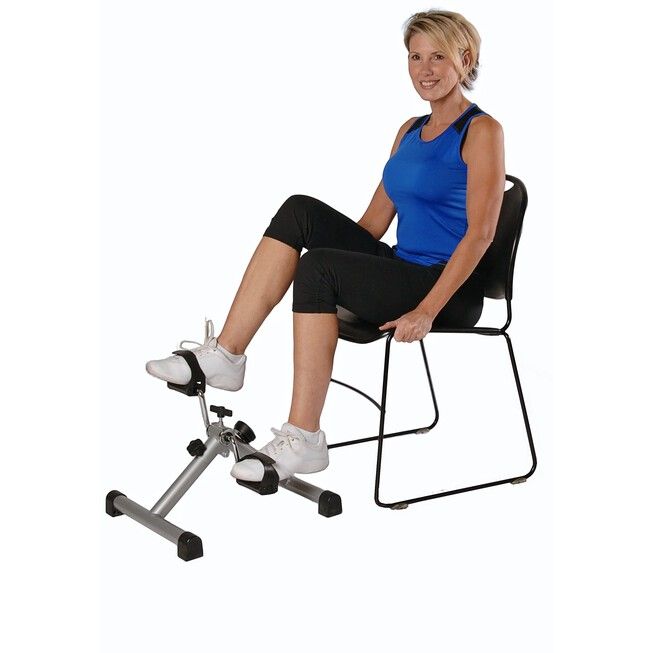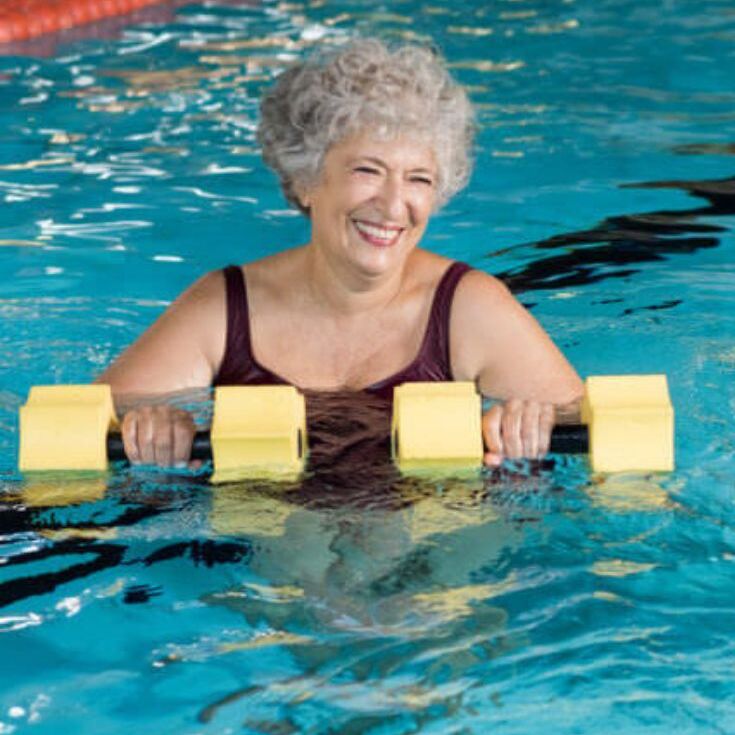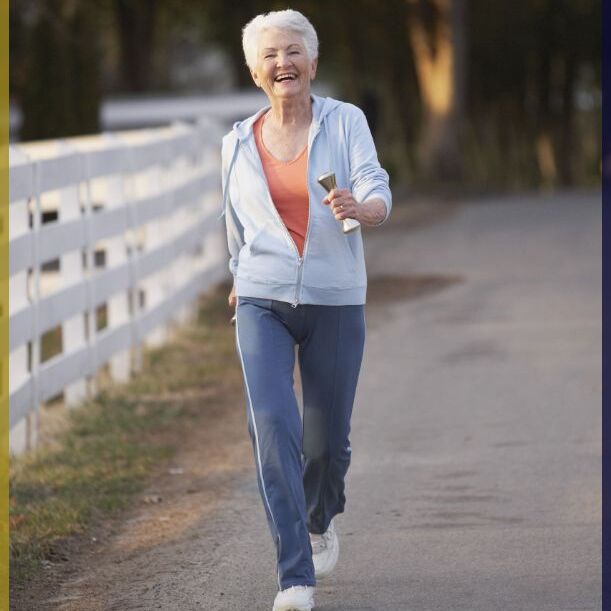Aerobic Exercise for Seniors: Top Workouts for Improved Fitness
The Importance of Aerobic Exercise for Seniors
Aging does not mean stopping physical activity. In fact, aerobic exercise for seniors is crucial for maintaining health. Regular aerobic activity boosts the heart and lungs. It improves circulation and reduces the risk of chronic diseases. Here are key reasons why seniors should keep moving:
Cardiovascular Health
Aerobic exercise strengthens the heart. It helps maintain healthy blood pressure levels and reduces the risk of heart disease. Seniors can keep their cardiovascular system in good shape with regular aerobic workouts.
Weight Management
As metabolism slows with age, maintaining a healthy weight becomes challenging. Aerobic exercise helps burn calories and prevents obesity, which can lead to health issues.

Enhanced Mental Health
Exercise does wonders for the mind. It can alleviate symptoms of depression and anxiety. Regular movement promotes better sleep and sharpens cognitive function.
Strengthening Bones and Muscles
Weight-bearing aerobic activities increase bone density. They also help in preserving muscle mass, which often declines as people age.
Improved Flexibility and Balance
Regular aerobic exercise enhances flexibility. It reduces the risk of falls by improving balance and coordination. This is vital for preventing injuries in seniors.
Social Interaction
Exercise classes offer chances to socialize. Friendship and support from peers can also boost overall well-being.
It is clear: aerobic exercise for seniors helps in living a longer, happier, and healthier life. By incorporating safe and suitable activities into their routines, seniors can enjoy the benefits of aerobic fitness regardless of age.
Swimming: A Gentle Yet Effective Workout for the Elderly
Swimming is ideal for seniors looking for a safe aerobic exercise. The water supports the body, lessening stress on joints. This makes it a perfect choice for those with arthritis or other conditions. Seniors can enjoy a full-body workout through swimming. It helps build endurance, muscle strength, and cardiovascular fitness, all with minimal risk of injury.
Swimming also has mental health benefits. Being in water is known to soothe the mind and can reduce stress levels. Additionally, the rhythmic nature of swimming can be meditative, providing mental clarity.
Senior swimmers can start with short sessions. They can gradually increase their time in the pool as their comfort and fitness levels improve. It’s important to practice water safety. Seniors should always swim with a buddy or during supervised times in public pools.
For those uncertain about swimming strokes, water aerobics is a great alternative. These classes involve exercises in water with music and are often held in groups. This provides social interaction, which is beneficial for emotional well-being.
Before diving into this aquatic exercise, seniors should consult with their healthcare provider. This ensures that the activity suits their health status. With the green light, seniors can incorporate swimming into their aerobic exercise routine. This way, they can maintain a heart-healthy lifestyle well into their later years.

Walking: Simple and Accessible Cardio for Older Adults
Walking offers a straightforward and accessible way for seniors to engage in aerobic exercise. As the simplest form of physical activity, it requires no special equipment or location. A pair of comfortable shoes is all that is needed to start reaping the benefits of this gentle cardiovascular workout.
Walking helps maintain a healthy heart and manage weight effectively. It is also adaptable; the intensity can vary from a leisurely stroll to a brisk walk based on individual fitness levels. Seniors can walk alone for peace and reflection or with friends for social interaction and motivation.
In addition to its cardiovascular advantages, walking enhances leg strength and improves balance, which is crucial for preventing falls. Moreover, it can be done indoors in malls or on treadmills, or outdoors in parks, making it a versatile option for all weather conditions.
Before starting a walking routine, seniors should consult with their healthcare provider. It’s important to ensure this exercise aligns with their overall health plan. With clearance, seniors can gradually increase their walking time and distance, tailoring their routines to personal comfort and ability.
Regular walking can significantly contribute to a senior’s aerobic fitness. It supports longevity and quality of life by fostering physical health and mental well-being. For seniors, it’s not just about moving; it’s about moving forward with a heart-healthy and independent lifestyle.
Chair Aerobics: Adapting Exercises for Limited Mobility
Chair aerobics offer a great solution for seniors with mobility issues. This form of aerobic exercise for seniors allows for a range of movements while seated. Engaging in chair aerobics can improve cardiovascular health, flexibility, and muscle tone.
Here are some chair aerobics exercises suitable for seniors:
- Arm Circles: Sit tall and extend the arms. Rotate them in small circles to warm up your shoulder joints.
- Seated Marching: Lift your knees one at a time. This mimics the motion of walking and gets your heart pumping.
- Toe Taps: Tap your toes on the floor under your chair to improve lower leg circulation.
- Side Bends: Reach one arm up and bend to the side while seated. This exercise stretches your side muscles and increases flexibility.
Seniors can perform these exercises in short sessions. Over time, sessions can increase as they become more comfortable with the activities.
It’s important for seniors to listen to their bodies. If something feels uncomfortable, they should stop and rest. Consulting with a healthcare provider before starting chair aerobics is also a good practice. This checks that the exercises suit their health needs.
By incorporating chair aerobics into their routine, seniors can stay active. This can lead to a healthier and more enjoyable life despite physical limitations.

Senior-Friendly Fitness Classes
Senior-friendly fitness classes are specifically designed to cater to the older demographic. They often emphasize low-impact exercises that are gentle on the joints while still providing cardiovascular benefits and improving strength. These classes typically include a mix of activities tailored to various fitness levels, ensuring that every senior can participate safely and effectively.
Tailored to Senior Needs
These classes are structured considering the physical capabilities of seniors. Instructors are trained to modify exercises, reducing the risk of strain or injury.
Low-Impact Exercises
Activities such as yoga, tai chi, and light dancing focus on improving balance and flexibility, which are pivotal for senior health.
Social Experience
Participating in a group setting allows for social interaction, which is beneficial for mental health and creates a supportive community environment.
Professional Guidance
Qualified instructors guide seniors through routines, offering support and ensuring exercises are performed correctly for maximum benefit and minimal risk.
Senior-friendly fitness classes are an ideal setting for aerobic exercise for seniors. They provide support, adaptability, and a social atmosphere, encouraging seniors to maintain an active and healthy lifestyle.
Cycling: A Safe Way to Build Stamina and Strength
Cycling stands out as a safe and effective form of aerobic exercise for seniors. It allows older adults to improve their stamina and muscle strength with minimal joint strain. The stationary bike is particularly suitable, as it reduces the risk of falls associated with outdoor cycling and can be used regardless of weather conditions.
Here are several benefits of cycling for seniors:
- Improves Cardiovascular Health: Continuous pedaling boosts heart rate, promoting better blood circulation and heart function.
- Strengthens Lower Body: Cycling targets leg muscles, enhancing overall leg strength and endurance.
- Low Impact on Joints: The cycling motion is smooth and gentle, making it easier on hips, knees, and ankles.
- Adjustable Intensity: Seniors can set their own pace and resistance level, allowing for a custom fit workout to their fitness levels.
- Encourages Independence: Being able to cycle indoors helps seniors maintain an exercise routine on their own.
Before starting a cycling routine, seniors should get advice from a healthcare provider to ensure it aligns with their health conditions and goals. Starting with short, manageable sessions is key, with gradual increases in duration and intensity as comfort and fitness improve.
By incorporating cycling into their weekly exercise plan, seniors can work toward maintaining a healthy lifestyle while enjoying the benefits of an aerobic workout tailored to their needs.
Safety Tips for Senior Aerobic Activities
Engaging in aerobic exercise is vital for senior health, but safety must come first. Here are essential safety tips to follow when participating in aerobic activities:
- Start with Medical Clearance: Before starting any exercise, seniors should get a doctor’s approval. This step ensures activities match their health status.
- Warm-Up Properly: Begin sessions with a light warm-up to prep muscles and reduce injury risk.
- Stay Hydrated: Drink water before, during, and after exercise to avoid dehydration.
- Wear Proper Gear: Comfortable clothing and suitable shoes support safe workouts.
- Cool Down: End sessions with gentle stretching to relax muscles and lower heart rate safely.
- Listen to Your Body: Take breaks if tired or in pain. Overexertion can cause harm.
- Monitor Heart Rate: Keep track of heart rate to ensure it stays in a safe range for age and health.
- Avoid Extreme Weather: Exercise indoors when it’s very hot or cold outside to prevent health issues.
- Stay Informed: Learn about the exercises and understand proper techniques.
- Seek Support: Involve family or friends, or join classes for motivation and safety.
By following these safety tips, seniors can enjoy the benefits of aerobic exercise while minimizing risks. Regular, safe physical activity promotes a robust and independent lifestyle for older adults.
Motivation and Consistency: Encouraging Regular Exercise Routines
Maintaining a regular exercise routine is key for seniors. Yet, staying motivated can be a challenge. Here are strategies to encourage regular aerobic exercise for seniors:
- Set Realistic Goals: Begin with easy goals and increase them slowly. This makes success more likely.
- Establish a Routine: Pick specific days and times for workouts. Regularity can build a lasting habit.
- Find Enjoyable Activities: Choose exercises that are fun. Enjoyment can increase the desire to exercise.
- Track Progress: Keep a record of exercise sessions. Seeing improvements can boost morale.
- Get Social Support: Exercise with friends or groups. The company can make workouts more pleasant.
- Reward Achievements: Celebrate milestones with something special. Rewards can motivate continued effort.
- Stay Positive: Focus on the benefits of exercising, not the difficulties. A positive mindset helps persist.
- Adapt to Changes: Be willing to adjust exercises when needed. Flexibility keeps seniors active despite setbacks.
Consistency is the secret to reaping the benefits of aerobic activity. With motivation and regular practice, seniors can enjoy a healthier lifestyle. They can also overcome common barriers to exercise. Above all, the key is to keep moving forward at a comfortable pace.